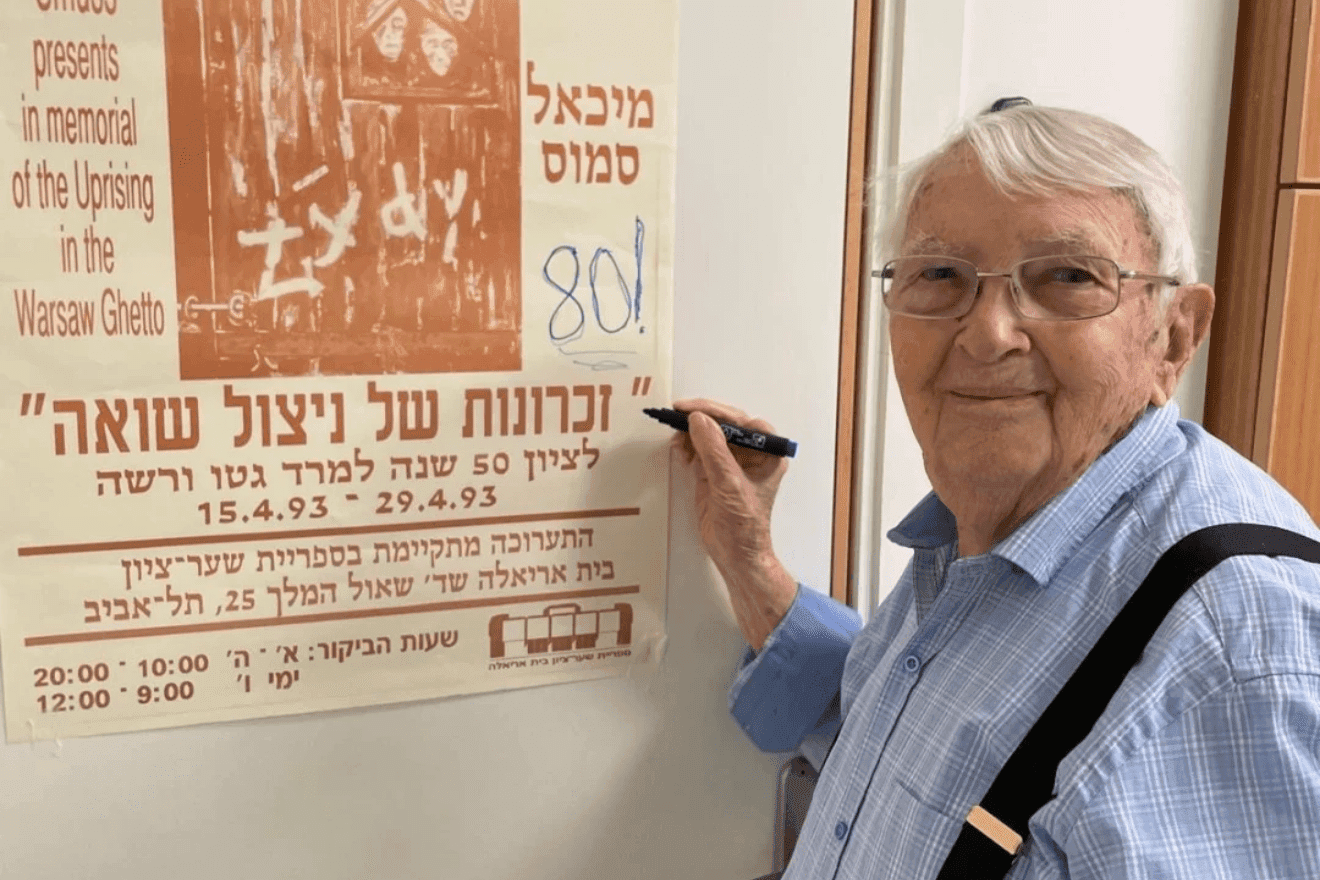We're loading the full news article for you. This includes the article content, images, author information, and related articles.
The passing of Michael Smuss, a Nazi resistance fighter and Holocaust educator, marks a pivotal moment in history, raising urgent questions about how the world will preserve the memory of the Holocaust as the final survivors depart.

Michael Smuss, a resistance fighter who battled the Nazis as a teenager in the 1943 Warsaw Ghetto Uprising, has died in Israel at the age of 99, his wife confirmed on Thursday, October 23, 2025 (EAT). His death marks the loss of one of the last living witnesses to one of the most desperate and heroic acts of Jewish resistance during World War II.
Born in the Free City of Danzig (now Gdańsk, Poland) in 1926, Smuss was forced into the Warsaw Ghetto with his father in 1940. Inside the ghetto walls, where hundreds of thousands of Jews were imprisoned in horrific conditions, a young Smuss joined the Jewish underground. He used his position in a German workshop, where he was forced to repair soldiers' helmets, to smuggle a chemical thinner used to create Molotov cocktails for the resistance.
"In the ghetto, I witnessed the horrors caused by the Nazis to the Jews," Smuss recounted in later years. "A few young friends and I joined the underground resistance. The resistance's goal was to stop the Nazis' terrible deeds."
When German forces began the final liquidation of the ghetto on April 19, 1943, Smuss and his comrades fought back in a valiant, month-long struggle. After the uprising was brutally crushed, Smuss was captured. He survived deportation to several Nazi concentration camps, including Majdanek and Flossenbürg, and endured a forced death march in the final days of the war in 1945 before being liberated by US troops.
Following the war, Smuss emigrated to the United States before settling in Israel in 1979. He dedicated his life to educating future generations about the atrocities he witnessed, using art as a medium to process his trauma and share his story. His work has been exhibited internationally, particularly in Germany, where he frequently spoke to students.
Multiple diplomatic missions and organizations, including the Polish embassy in Israel and the Holocaust Educational Trust, referred to Smuss as the "last surviving fighter of the Warsaw Ghetto Uprising." However, this claim requires careful context. In December 2018, the death of Simcha Rotem, another veteran of the uprising, was widely reported by international media and Israeli officials as the passing of the last known fighter. The discrepancy highlights the difficulty in definitively tracking the final survivors of such a monumental historical event and underscores that Smuss was, without dispute, one of the very last of his generation of fighters.
In the month preceding his death, Smuss's lifelong work was recognized when Steffen Seibert, Germany's ambassador to Israel, awarded him the German Federal Cross of Merit, the country's highest civilian honour. The award acknowledged his immense contribution to Holocaust education and the promotion of dialogue between Israel and Germany. "He devoted his life to Holocaust education," Ambassador Seibert stated in a tribute on social media platform X. The Polish embassy in Israel also paid tribute, noting, "His legacy endures."
While the story of Michael Smuss has no direct ties to Kenya, its global implications are profound. His death is a stark reminder that the era of direct, living testimony of the Holocaust is drawing to a close. For the world, including nations across Africa, the challenge is to ensure that the lessons of the Holocaust—about the dangers of hatred, racism, and indifference—are carried forward. The responsibility to remember, as Smuss did through his art and testimony, now shifts entirely to the next generations, who must rely on the historical records and the powerful stories left behind by survivors like him.
Keep the conversation in one place—threads here stay linked to the story and in the forums.
Other hot threads
E-sports and Gaming Community in Kenya
Active 6 months ago
Popular Recreational Activities Across Counties
Active 6 months ago
The Role of Technology in Modern Agriculture (AgriTech)
Active 6 months ago
Investing in Youth Sports Development Programs
Active 6 months ago